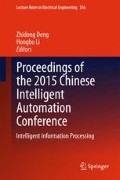Abstract
Due to the array steering vector errors and small-sample errors and so on, the performance of the Standard Capon Beamformer (SCB) may become worse than that of the Conventional Beamformer (CBF) in practical engineering applications. Nowadays, almost all existing algorithms to improve the robustness of SCB utilize the steepest descent method, conjugate gradient method, least mean squares (LMS) method and so on. However, most of them have the slow convergence and inefficient computation. Aiming at the above problems, this paper presents a unified process to solve them by the second-order cone programming (SOCP) theory, which can not only enhance the convergence speed but also improve the calculation accuracy so as to overcome the shortcomings of the previous optimization solutions effectively. It turns out that most adaptive beamforming algorithms involve a non-convex problem which is minimization of a quadratic function subject to infinitely many non-convex quadratic constraints. In this paper, it is shown that the proposed algorithm can be reformulated in a convex form as the so-called SCOP and solved efficiently (in polynomial time) using the well-established interior point method. Finally, computer simulations show the algorithm’s excellent performance as compared with existing adaptive beamforming algorithms via the computer simulation examples.
Access this chapter
Tax calculation will be finalised at checkout
Purchases are for personal use only
References
HAMID KRIM and MATS VIBERG (1996) Two decades of array signal processing research.IEEE Signal Process Mag
Vincent F, Besson O (2004) Steering vector errors and diagonal loading. IEEE Proc-Radar Sonar Navig 151(6):337–343P
Applebaum SP, Chapman DJ (1976) Adaptive arrays with main beam constraints. IEEE Trans Antennas Propag 24(5):650–662P
Capon J (1969) High-resolution frequency-wave number spectrum analysis. Process IEEE 57(8):1408–1418P
Jisung O, Kim S-J, K-L Hsiung (2005) A computationally efficient method for robust minimum variance beamforming. IEEE
Gershman AB, Nickel U, Bohme JF (1997) Adaptive beamforming algorithms with robustness against jammer motion. IEEE Trans Signal Process 45:1878–1885P
Carlson BD (1988) Covariance matrix estimation errors and diagonal loading in adaptive arrays. IEEE Trans Aerosp Electron Syst 24:397–401P
Yu JL, Yeh CC (1995) Generalized eigenspace-based beamformers. IEEE Trans Signal Process 43:2453–2461P
Vorobyov SA, Gershman AB, Luo ZQ (2003) Robust adaptive beamforming using worst-case performance optimization: a solution to the signal mismatch problem. IEEE Trans Signal Process 51(2):313–324
Li Jian, Stoica Petre, Wan Zhisong (2004) Doubly constrained robust capon beamformer. IEEE Trans Signal Process 52(9):2407–2423P
Sergiy A, Vorobyov YR, Alex B. Gershman (2005) Robust adaptive beamforming using probability-constrained optimization. IEEE, pp 934–939
Sturm JF (1999) Using SeDuMi 1.02, a MATLAB toolbox for optimization over symmetric cones[EB/OL]. Optim Meth Softw 11:625–653P
Acknowledgments
This paper is supported by the Scientific Research Foundation of the Education Department of Heilongjiang Province, China (Grant No. 12541657).
Author information
Authors and Affiliations
Corresponding author
Editor information
Editors and Affiliations
Rights and permissions
Copyright information
© 2015 Springer-Verlag Berlin Heidelberg
About this paper
Cite this paper
Zhang, RY., Song, HY. (2015). Application of Second-Order Cone Programming Theory to Robust Adaptive Beamforming. In: Deng, Z., Li, H. (eds) Proceedings of the 2015 Chinese Intelligent Automation Conference. Lecture Notes in Electrical Engineering, vol 336. Springer, Berlin, Heidelberg. https://doi.org/10.1007/978-3-662-46469-4_43
Download citation
DOI: https://doi.org/10.1007/978-3-662-46469-4_43
Published:
Publisher Name: Springer, Berlin, Heidelberg
Print ISBN: 978-3-662-46468-7
Online ISBN: 978-3-662-46469-4
eBook Packages: EngineeringEngineering (R0)

